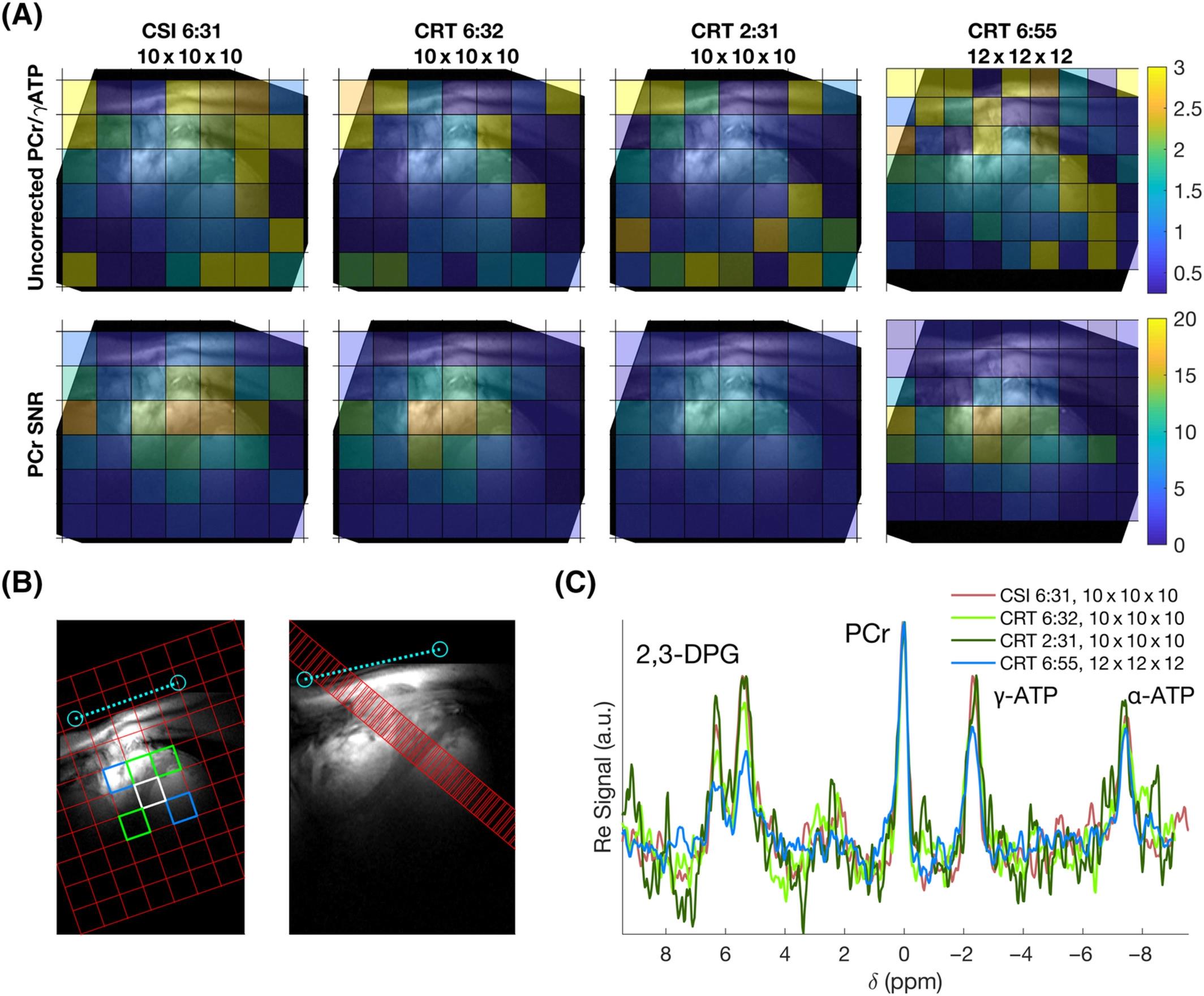New method for spectral-spatial encoding using a concentric ring trajectory for rapid cardiac metabolism assessment
Investigators: Ladislav Valkovič, Ivan Frollo
Alterations in cardiac metabolism are indicative of several diseases. Current data acquisition methods of phosphorus MR spectroscopy (31P-MRS) are even at 7T systems too slow to allow investigations of dynamicchanges or measurements under stress. Therefore, we have developed a new method of spectraspatial encoding, which substitutes typical Cartesian sampling with concentric ring trajectory. This allows much faster acquisition. In comparison to currentlz fastest Cartesian acquisition technique (6.5 minutes), concentric rings allowed the same resolution scan in only 2.5 minutes. Alternatively, increased spatial resolution (voxel size of 6.67 mL instead or 11.5 mL) was achieved in the same measurement time.
In parallel, 31P-MRS was used to assess changes in cardiac metabolism of patients with type II diabetes. We have uncovered increse in inorganic phosphate content, which might be indicative of decreased energy production through oxydative phosphorilation.
Fig. 1: Maps of phosphocreatine to adenosine-triphosphate ratio (PCr/ATP), which is indicative of cardiac metabolism, and maps of PCR signal to noise (A). Going from left to right the maps represent Cartesia sampled data (CSI 6.5 min), concentric ring trajectory in matched time (CRT 6.5 min), accelerated concentric rings (CRT 2.5 min) and time matched concentric ring readout with increased spatial resolution (CRT 6.9 min). The regions of interest are depicted in panel B and in panel C are compared representative spectra from the septum acquired using these techniques. Please note the good agreement between the metabolite maps and spectra. The cost for acceleration using concentric rings is also apparent in decresed PCr signal to noise ratio.
Projects: APVV-15-0029, VEGA 2/0003/20
Foreign partner: Oxford Centre for Clinical Magnetic Resonance Research, John Radcliffe Hospital, Headington, Oxford, UK
Signed agreement on scientific cooperation 14. X. 2021
 Contacts
Contacts Intranet
Intranet SK
SK
